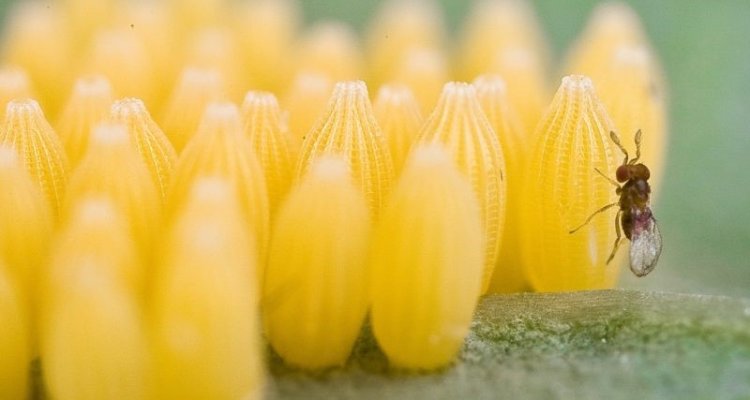
Project
Natural selection on butterfly sex scents by egg parasitoids and implications for biological control
Many insects use chemical signals to communicate between sexes. Some male butterflies transfer a volatile perfume during mating to the females to ensure their paternity by making them less attractive to other males. These so-called anti-aphrodisiacs are prone to spying by minute parasitic wasps, natural enemies of the butterflies that kill their eggs. We want to understand the evolution of these pheromones in butterflies that can be pests of cabbage crops and the role that parasitic wasps play therein. Although the wasps are mass-reared and released as biocontrol agents against insect pest eggs, their efficiency is often low and knowledge on their behaviour in the field is scarce. This project is a first step towards the understanding the use of butterfly anti-aphrodisiacs by biocontrol agents, and studying their effectiveness under natural conditions to eventually improve biological control in open fields.
Background
Information conveyance by chemical signals plays a crucial role in the biology of insects. Many insects possess a sexual communication system that is amenable to chemical espionage by parasitic wasps. Some butterflies are known to use species-specific anti-sex pheromones, so-called anti-aphrodisiacs (AAs), that are passed from males to females during mating, to render females less attractive to conspecific males. We discovered an exciting, novel type of exploitation of anti-aphrodisiacs from two cabbage white butterflies, Pieris brassicae and P. rapae, by tiny egg parasitoids. When a female Trichogramma wasp detects the anti-aphrodisiac pheromone, she hitch-hikes with a mated female butterfly (i.e. phoresy) to a host plant and then parasitizes her freshly laid eggs.
Project description
We aim to unravel the evolution of AA signals in cabbage whites and answer the question whether variation in AAs is a product of natural selection. Specifically, we want to understand to what extent AAs have been constrained by this espionage-and-ride strategy of Trichogramma wasps, to eventually test these signals as new allelochemical-based tactics for pest control. We intend to investigate, whether:
- the espionage-and-ride strategy is common among Trichogramma wasps
- the evolution of AAs is driven by egg parasitoids
- genotypic variation in the parasitoids’ attraction to AAs exists
- laboratory breeding of egg parasitoids on stronger AA-use increases their effectiveness in the field.
The proposed research is multidisciplinary and involves field work, behavioural experiments, chemical analysis, molecular and genetic experiments. Besides enhancing our understanding of the evolution of sexual communication in insects, we intend to gain more extensive knowledge on the host location behaviour of these insect egg-killing wasps and apply genetic tools to improve their use in open fields.